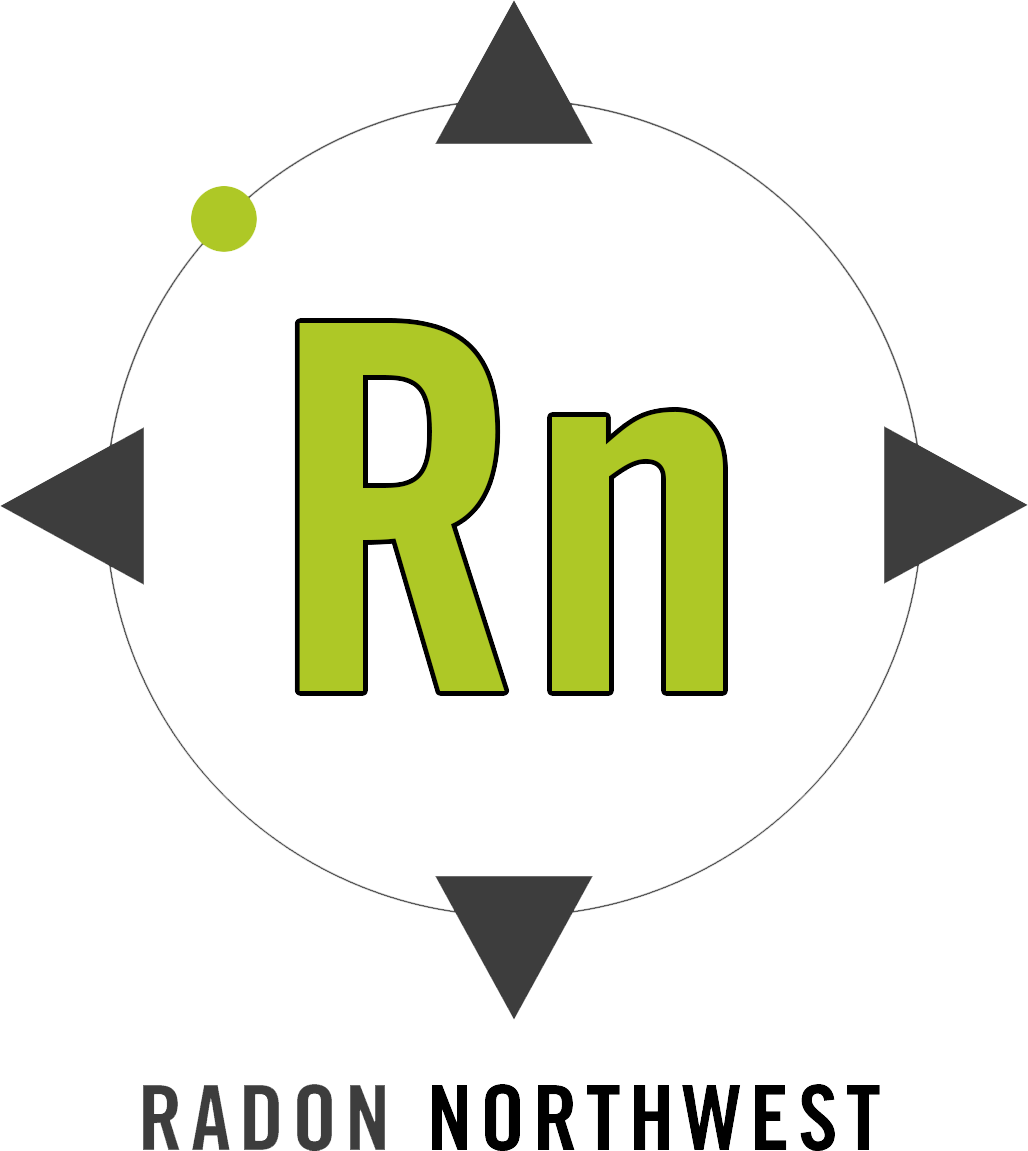Radon is a colorless, odorless and tasteless gas that is undetectable by the human senses.
It is a naturally occurring radioactive gas found in soil throughout the world. It is formed from the decay of uranium, a metal elemental component in granite and shale deposits. Areas of granite containing uranium can be found throughout Oregon and Washington with concentration levels differing from place to place.
If a building is situated above soil with high concentrations of radon, pressure differences create a vacuum that draws the gas up from the soil and into the enclosed living space. Some of the pressure differences that contribute to this effect include the stack effect from heating, environmental factors such as rain, wind and falling barometric pressures, and, the use of exhaust systems. The most common cause, the stack effect, is created when indoor air is heated, causing it to rise and infiltrate through the upper portion of the dwelling. Due to this temperature-induced pressure differential, radon entry rates are higher in the winter.
There are several common pathways through which radon can enter the living space from the soil below:
- Through expansion joints, channel drains and /or cold joints in slabs
- Through cracks in concrete floors
- Through crawl spaces
- Through block walls
Health Effects of Radon
Radon is by far the greatest single source of radiation to the general public. The 2005 Surgeon General’s advisory on radon states that radon gas in the indoor air of America’s homes poses a serious health risk. More than 20,000 Americans die of radon related lung cancer every year.
When radon is present in the home or workplace, the harmful gas and its decay products are taken into the lungs without any obvious initial effect. Despite this initial subtlety, radon is known to be a harmful carcinogen. There is clear evidence that breathing radon and its decay products can lead to lung cancer. There are approximately 22,000 lung cancer deaths per year attributed to radon exposure.
Millions of homes in the United States have elevated radon levels. The first step to protect your family from radon is to have your home tested to find out if you’re being exposed to elevated levels. If elevated levels are found, there are mitigation systems that can be installed to minimize exposure to radon.
Radon Measurement and Testing:
Radon is measured in picocuries per liter, abbreviated pCi/L. The average levels found outdoor air in the United States is 0.4 pCi/L and average indoor air is 1.3 pCi/L. The guidance from the EPA recommends mitigation be considered in homes where testing finds levels at or above 4.0 pCi/L.
The EPA provides two distinct protocols for radon measurement in residential homes: real estate and non-real estate. The real estate protocols recognize the time critical nature of the inspection period in a property transaction. Guidance for real estate measurement is covered in the EPA’s Home Buyer’s and Seller’s Guide to Radon and is an excellent source of information providing answers to many common radon questions. The Citizen’s Guide to Radon offers strategies for testing your home for radon and discusses what steps to take after you have measurement results.
We are capable of conducting both real estate and non-real estate radon measurement procedures following the appropriate protocol for the situation. In all real estate measurements we use continuous radon monitors and can conduct a test in as little as 48 hours. Our monitors measure and report radon levels in hourly increments and an average of the hourly results are reported as the final measurement. This is ideal for real estate transactions because we can deliver results immediately upon completion of the testing period.
We strictly follow the EPA short term measurement protocols when conducting a typical real estate 48-hour measurement. It is very important that closed house conditions are maintained throughout the testing procedure to ensure accurate results. Closed house conditions must begin 12 hours prior to the beginning of the 48-hour testing period. All outside vents and windows must not be opened. All outside doors should be closed except for normal entry and exit. Ask your project manager for additional details on closed house conditions.
We will pickup the monitoring device at the completion of the 48-hour measurement period. The monitor will be transported back to our office and the data will be downloaded to our system. The data will be interpreted and a report generated for our client. If the average radon level during a real estate testing period is at or above 4.0 pCi/L we will recommend the installation of a radon mitigation system, and can provide a referral to a mitigation company.
The EPA specifies several options for nonOPB-real estate transaction radon testing. When the time constraints of a real estate transaction don't exist, the testing period can be extended out to as much as one year. Typically we will recommend an initial short term measurement lasting anywhere from 48 hours to 90 days. Once results are received we can recommend the follow up testing if necessary. If the initial test is less than 4.0 pCi/L, follow-up testing is probably not needed. If the initial short term test is at or above 4.0 pCi/L, follow-up test should be performed. If the initial test is between 4-10 pCi/L, the EPA recommends a long term follow-up test be conducted. If the initial test result is over 10 pCi/L, the EPA recommends that a second short-term test can be performed to verify the initial measurement. If two short-term tests were done, mitigation recommendation will be based on the average of the two tests. If a long term test was conducted, the results of the long-term will determine the need for mitigation. Mitigation is recommended if 4.0 pCi/L or higher.

